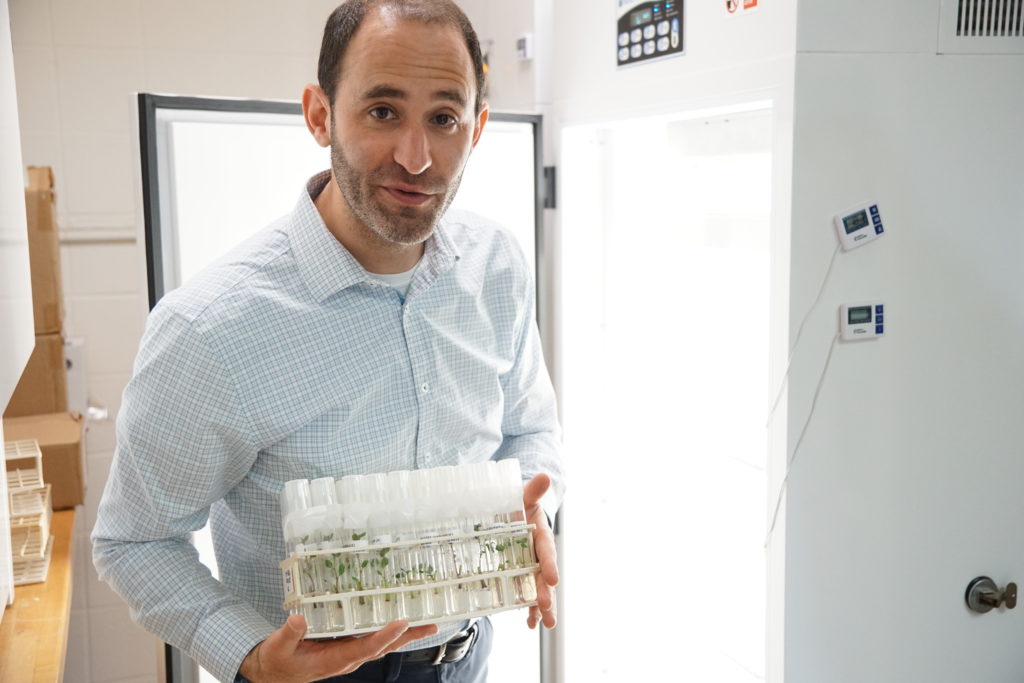From building telescopes to constructing models to predict the phenotypes of potatoes, science research at UW-Madison relies on a diverse range of engineering expertise.
With a yearly budget of $1.4 billion, UW-Madison, one of the world’s foremost research universities, ranked 8th in the nation when it comes to yearly spending on research, according to a December 2022 report by the National Science Foundation. With groundbreaking discoveries occurring across all corners of the campus, one might begin to wonder: where do engineers fit into the mix?
While there is certainly plenty of research happening in the College of Engineering (just ask any of your favorite professors what they work on outside of class), engineers also play a crucial role in the ongoing research across various fields at UW-Madison. From developing medical tools, to telescopes, to computer programs, researchers in Madison recognize that they could not yield the same results without the help of their friendly neighborhood engineers.
To look at the goings on of just a few of the prominent labs on the UW-Madison campus, Dr. Marsha Wolf and Professor Jeff Endelman trace their roots back to engineering, while leading careers in astronomy and horticulture, respectively.
Dr. Wolf, principal investigator of Washburn Astronomical Laboratories, which is situated on the top floor of Chamberlin Hall, most recently led the design and construction of a near-infrared spectrograph mounted on the Southern African Large Telescope near Sutherland, South Africa. This project, which spanned 10 years, involved collaboration with engineers at the Space Science and Engineering Center (SSEC) on campus.
“We pulled in engineers from specialized areas to do things like thermal analysis,” explains Wolf. “We could easily recruit someone from there who had the experience we needed.” The partnership with the SSEC, she says, provides a cheaper and more convenient alternative to hiring someone from outside the university for a specialized task.
Washburn Labs also regularly takes on students from undergraduate to Ph.D. level, in both engineering and astronomy. These students work on a variety of tasks, including designing skin heaters to keep the spectrograph at an ambient temperature. Most student projects, however, involve building test instruments for the various components of the spectrograph.
When asked about the future for Washburn Labs, Wolf explains, “We have a new funded project starting to design and build a fiber integral field unit for a speckle imager, which is designed to take very fast images to freeze out the scene, giving the atmosphere less time to blur out the image.” This, she says, would allow scientists to take spectra of the high-resolution images, doubling the purpose of the telescopes.
Moving across disciplines and west several blocks to Moore Hall, home of the horticulture department, Professor Endelman is a potato breeder. His research focuses on accelerating potato development by analyzing the genomes of different potato varieties using statistical and computer science methods.

Endelman’s work, which spans from laboratories to greenhouses to field studies, involves considerable amounts of data collection and analysis. This includes information on the plants’ characteristics, as well as their gene sequences. One of the main goals of his group, Endelman says, is to “put all that together and develop breeding into a predictive science – to predict the characteristics of potato varieties based on their genetic information.”
As with astronomy, engineers can play many roles in plant breeding groups across the country. According to Endelman, “engineering is a very important discipline for agriculture in general.” Engineers are involved not only in developing new equipment for crop growth and harvesting, but also using technology such as RGB cameras and remote sensing to collect data on plants. Their contributions, Endelman says, are essential to conducting experiments in this field.
In addition to their roles in agriculture, engineers also contribute significantly to applied mathematics and statistics, developing predictive models for plant genetics and gene expression. When scientists breed potatoes, they produce hundreds of seeds. The difficulty, Endelman explains, lies in the fact that “each of these seeds could be a commercial variety,” but it is rarely feasible to grow or genetically sequence each one. Thus, statistical models can assist plant growers by identifying gene markers or smaller sequences, which can help predict the desirability of each potato seed.
When examining the roles that engineers play in the research of such a prominent research university like UW-Madison, the list goes on and on. From designing and building tools to capture wasps and mosquitoes in the etymology department, to developing code to detect neurodegenerative diseases earlier on in the psychology department, there seems to be no limit to the importance of engineers in research. Without brilliant engineers innovating the technology to better test and understand scientific research, this university, and the world we live in, would certainly not have progressed as rapidly to the place it is today.
